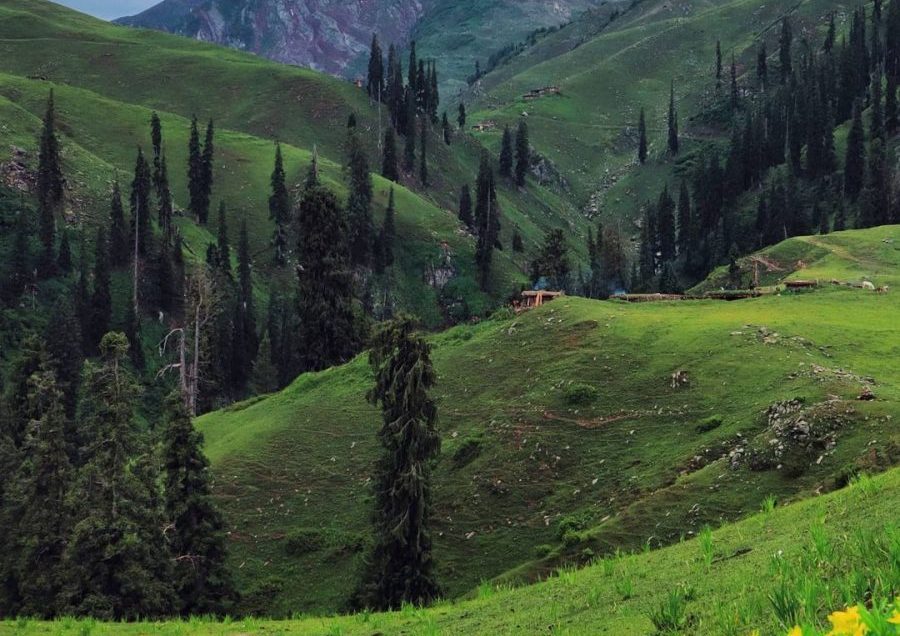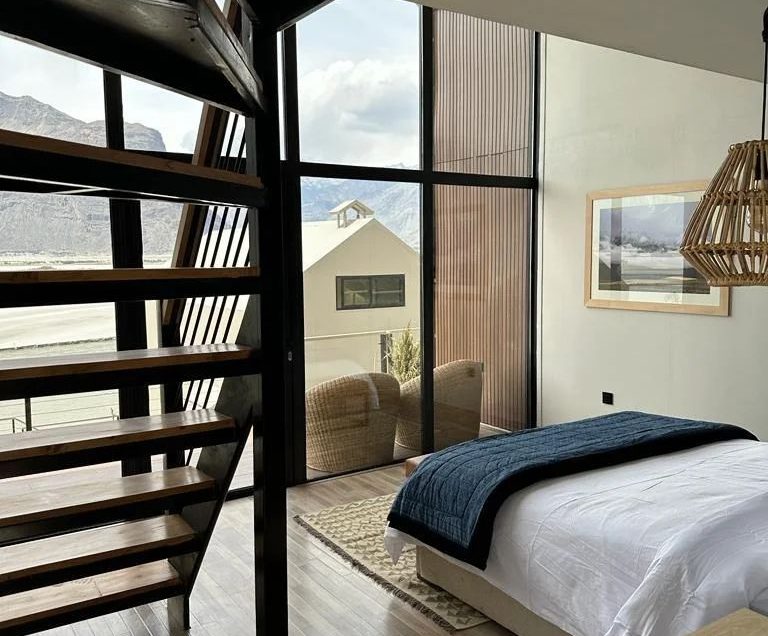Meaning of The Shigar Fort Skardu is home to The Fort on Rock, a historic fort that once belonged to Pakistan and Baltistan. Locals refer to it Shigar Fort as Fong Khar, which means “the palace on rocks” in the local Baltic language. The Fort Palace is located in a very diverse natural environment.
The stark contrasts between cliffs and terraced gardens, as well as between the constant thunder of the raging river and the calm spaces inside the garden site and houses themselves, highlight the pure raw quality of this scenery, which has been softened by a human habitation that dates back at least two millennia. The site’s distinctive attractiveness is attributed to the high rocky escarpment that forms the palace’s backdrop, the stream that flows in front of the complex, and the numerous irrigation channels that wind through an authentic and well-preserved town.
One of Skardu’s most picturesque valleys, with breathtaking views all around. We went to a lake called Hidden Lake, which is home to a farm where live fresh trout are raised. You can purchase live trout from this farm and have them prepared. Natural beauty at its best. One can must-see Shigar Serena fort. There are numerous locations where you can take pictures and enjoy the breathtaking valley views.
The guests are taken aback by the aromatic wind, rustic charm, and velvet emerald carpet of unspoiled beauty against a backdrop of snow-capped mountains.
History Of Shigar Fort
Amacha Dynasty of Shigar’s Raja constructed it in the seventeenth century. Aga Khan Cultural Service Pakistan (AKCSP-P), the Pakistan branch of the Aga Khan Historic Cities Programme, has repaired the fort. After renovation, Serena Hotels transformed the Fort into a museum and a five-star hotel. Approximately US$1.4 million was spent on the rehabilitation project between 1999 and 2004.
The “Hamacha” clan of Ganish, Hunza, is where the Amacha family’s origins lie, and they have controlled Shigar for thirty-three generations. Some of the Hamacha tribe’s survivors of the Hunza massacre managed to escape to Shigar via the Hispar glacial passage, where they rose to prominence and became known as the Amacha Kingdom in the 13th century.
Amacha Family of Ganish
The final building connected to the governing Amacha family is Fong-Khar. The oldest among them was Khar-e-Dong, a fort whose ruins may still be seen perched far above the current location on the cliffs. It is believed that the Mughal armies dispatched by Shah Jehan seized and destroyed Khar-e-Dong to help Hassan Khan reclaim the kingdom he had lost to roving barbarians. Most likely, the demolition of Khar-e-Dong made the current Fong-Khar necessary.
To create his Fort Palace in Shigar, Hassan Khan imported a wide range of artists from Kashmir, including goldsmiths, carpenters, stonemasons, and textile weavers. One of the distinctive characteristics that distinguish Fong-Khar is the blending of carving and embellishments with native Balti architecture that have Kashmiri influences. One of the distinctive characteristics that distinguish Fong-Khar as an important historical and architectural asset is the way that carving and embellishments with Kashmiri influences were combined with local Balti architecture.
Shigar Fort Location
On the fabled path to K-2, the second-highest mountain in the world sits Shigar Fort. It is one of the most impressive areas in the high Karakoram ranges, unrivalled in beautiful natural and cultural richness, and is situated in oasis-like environs, irrigated by the streams from the glaciers of Baltistan.
How to arrive Shigar Fort
A daily Boeing 737 aircraft from Islamabad to Skardu is run by Pakistan International Airlines (PIA). A breathtaking one-hour flight offers visitors’ breathtaking views of the Hindukush, Himalayan, and Karakoram mountain ranges, as well as five peaks that are over 8,000 metres high, including the well-known K-2 and Nanga Parbat. The driving time from Skardu airport to Shigar is 45 minutes. About five hours are needed to get from Gilgit. Awaiting guests entering by helicopter are greeted at the Shigar helipad and driven to the house.
Activities to do at Shigar Fort
Even though many people pick the Shigar Fort Residence for its attractiveness and tranquilly, there are many activities nearby. These include day hikes to remote valleys and other interesting locations, like the Deosai plateau, visits to cultural sites that reflect the distinctive blending of Hindu, Buddhist, and Islamic influences, like the “Buddha Rocks” and the near the area settlements of Khaplu, Kiris, and Kharmang, a brief hike to the “organic” village of Nangasoq, near Skardu, a trip to the hot springs at Chutron (two hours from Shigar), and so on. The Residence staff can assist with setting up these and other.
Hotel in Shigar Fort
In Shigar, Serena Shigar Fort features a restaurant, a balcony, a communal living room, and a garden. In addition to free Wi-Fi and room service, this five-star hotel has a complimentary shuttle service. Concierge services, a place to store luggage, and a currency exchange are available at the hotel for visitors. Every room in the hotel has a closet. There are bed linens and towels in each room at Serena Shigar Fort. A continental breakfast is offered to guests of the hotel.
There is a 24-hour front desk, complimentary private parking, and a business centre provided. Serena Shigar Fort is 24 kilometres away from the closest airport, Skardu Airport.
Best Season to go
The climate is moderate and cold so the best time to visit Shigar Fort is June to August.
Entry Ticket
700 Rupees.


